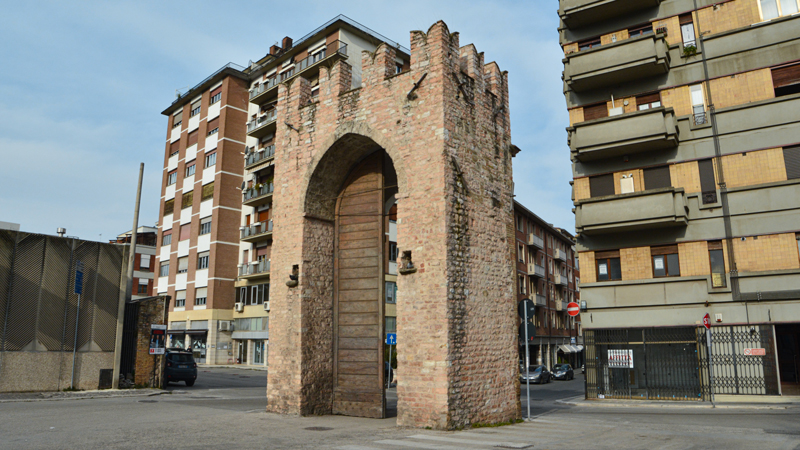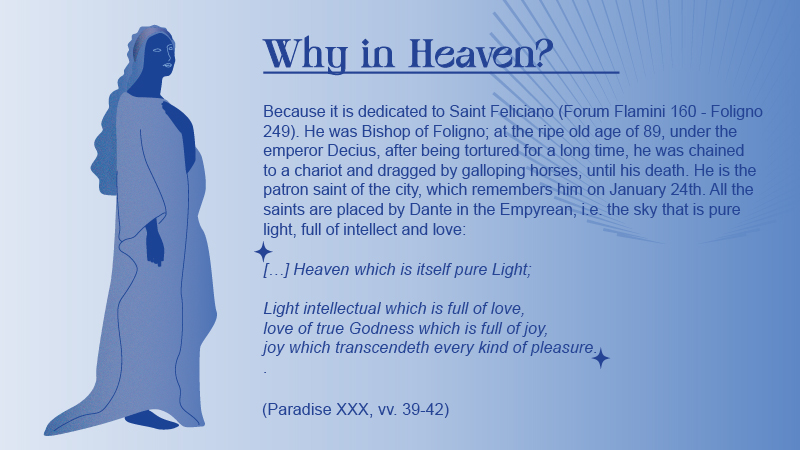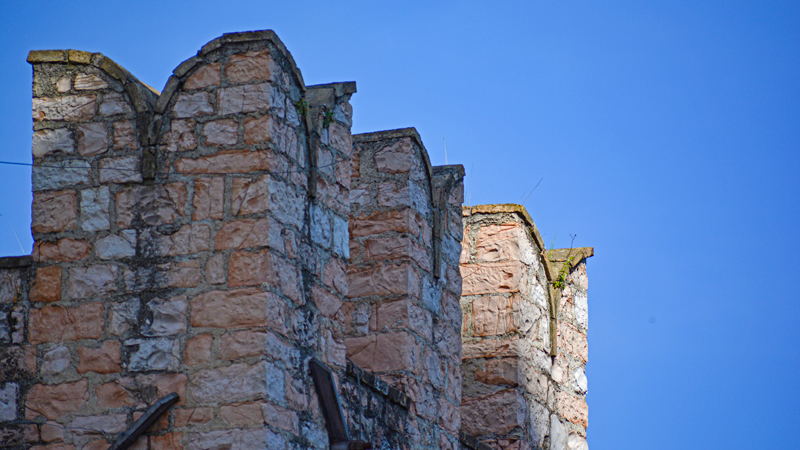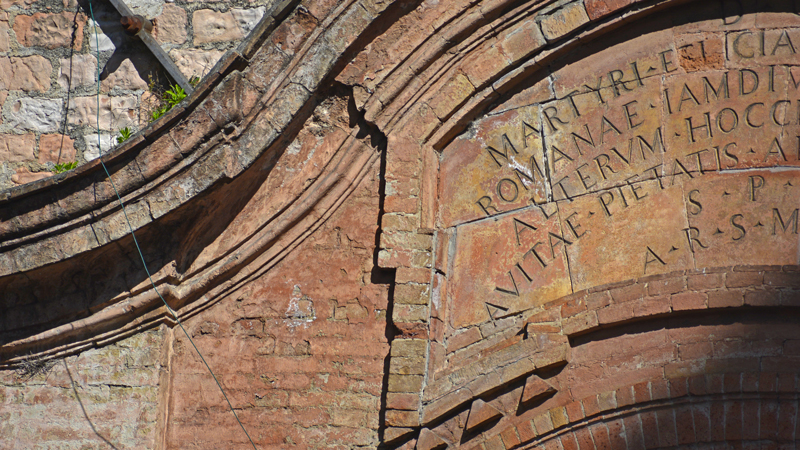The inhabitants of Foligno consider it one the symbols of the city, as it is the only one of the ancient city gates preserved until today. After it had been closed and transformed into a newsstand in the eighteenth century, it was reopened around 1920. A few years later, it became the object of numerous urban planning proposals for the reconstruction of the surrounding area, dictated by the new needs of mobility and commerce. In that period, the intervention of Monsignor Faloci Pulignani defended the existence of the gate before the Podestà and saved it from demolition. The door owes its name to the patron saint of Foligno, Saint Feliciano, to whom a more modest church near the door was dedicated, in addition to the Cathedral: hence, the name 'Felicianetto'.

Il progetto Divina Foligno è sviluppato nell’ambito del “programma Agenda urbana di Foligno Smart community - Comunità, Sostenibilità – Foligno 2020” intervento OT.6 INT_01 “Realizzazione della rete di attrattori culturali attraverso la realizzazione di itinerari culturali e tematici

The Divina Foligno project is promoted and financed as part of the "Urban Agenda of Foligno Smart community - Community, Sustainability - Foligno 2020 program" intervention OT.6 INT_01 "Creation of a network of cultural attractions through the creation of cultural and thematic itineraries"

Copyright © 2022 Landmark. All rights reserved.





